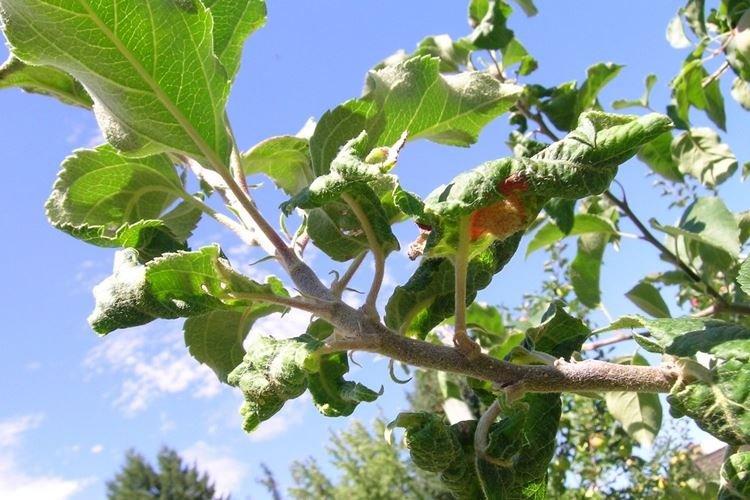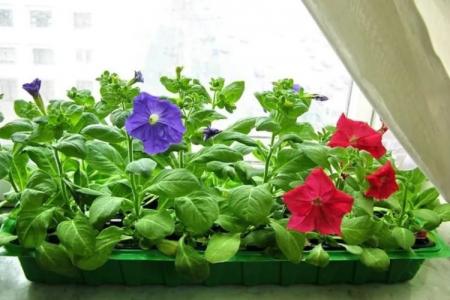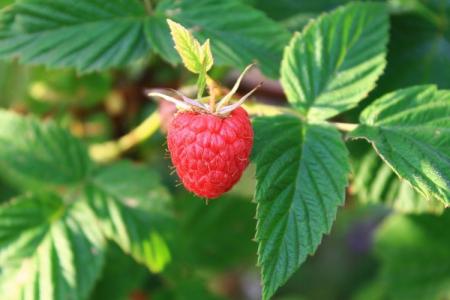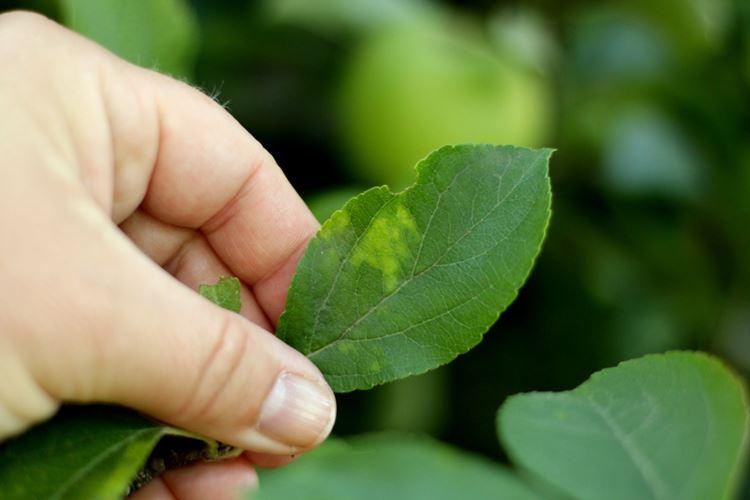
Fruit trees are very susceptible to unpleasant diseases, and the apple tree is no exception. Fungi that infect all parts of the tree are the most troublesome. Viruses appear less often, and, of course, the wrong care has not gone anywhere. Most often, alarming symptoms first appear on the leaves, so you need to be especially careful about them!
Bumps and bumps on the leaves
If the spots on the leaves of the apple tree began to acquire a pronounced texture, this significantly narrows the search for the problem. Most often, such deformations are a consequence of the vital activity of pests.
- Aphids actively lay their larvae everywhere and galls form on the surface of the leaves. Later, the leaves begin to dry and curl, because insects draw out all the juices from them;
- Small brown spots with tubercles are a symptom of phylostictosis. For the characteristic symptomatology, the disease is called "brown spot", and over time, the affected leaves simply fall off.
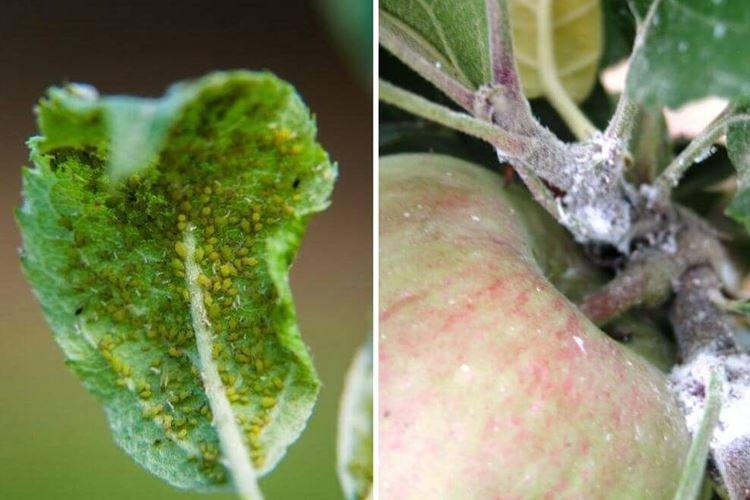
Leaves turn yellow and dry
This is perhaps the most common problem, so it mistakenly seems simple and straightforward. But the fact is that there are too many reasons for the yellowing and drying of the leaves.
- At first, problems appear due to heat and lack of moisture. And when the leaves, on the contrary, soften and rot, then the point is in its overabundance;
- Yellowness and dryness from the edges begin due to a deficiency of iron, magnesium or calcium in the soil;
- Due to watering in the middle of the day or a sharp change of rain to the scorching sun, burns may appear on the leaves - yellow dried spots;
- The leaves of the apple tree become weak and dry due to the fact that they are eaten by the apple mite. This is a very gluttonous pest that hibernates safely between branches and revives in spring. If the mite eats the buds, then the young leaves will immediately be painful;
- Small and pale yellow spots on the leaves, upon closer examination, can begin to actively spread to the sides. Then these are scale insects, which resemble small spots in the form of a comma. Because of them, the leaves can dry out and fall off completely;
- Bright yellow chaotic stripes with dots intertwine in a whimsical mosaic pattern when defeated by mosaics. An incurable virus suggests that then the tree must be destroyed.
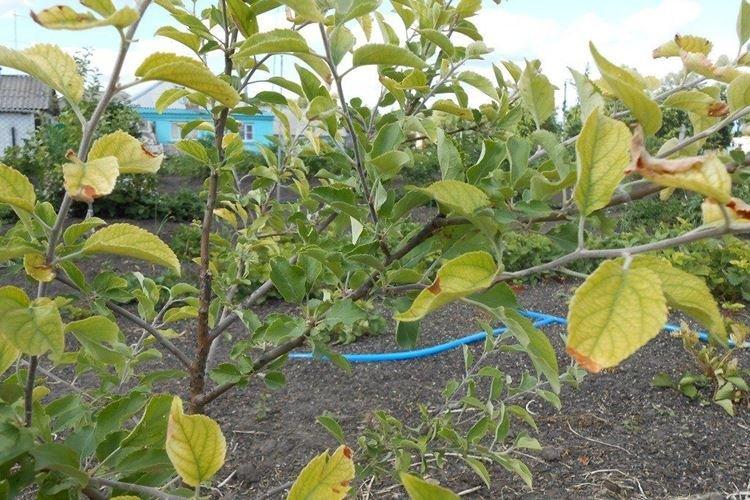
Brown spots on the leaves of an apple tree
Sometimes, instead of yellow spots, red, brown or even red spots appear on the leaves. This is already a more typical symptom, which often indicates fungi or viruses.
- Chaotic reddish spots on the sheet plates can be a sign of rust. Later, a fungal disease without treatment spreads to the fruit;
- Brown spots with a light middle, which can fall out or crack, is a sign of septoria. This disease is also called "white spot" and most fruit crops suffer from it;
- Marsoniasis or brown spots appear due to insufficient care of the crown;
- Dark spots with an olive tint are left by the main enemy of fruit trees - scab. Fortunately, now there are apple varieties that are resistant to a terrible scourge;
- Bright red spots are another type of fungal spot. But polystygmosis does not often affect apple trees and is more common, for example, in plums;
- Brown spots appear due to a strong copper deficiency. Most often, it is associated with an excess of nitrogen fertilizers, which disrupts the absorption of other trace elements.
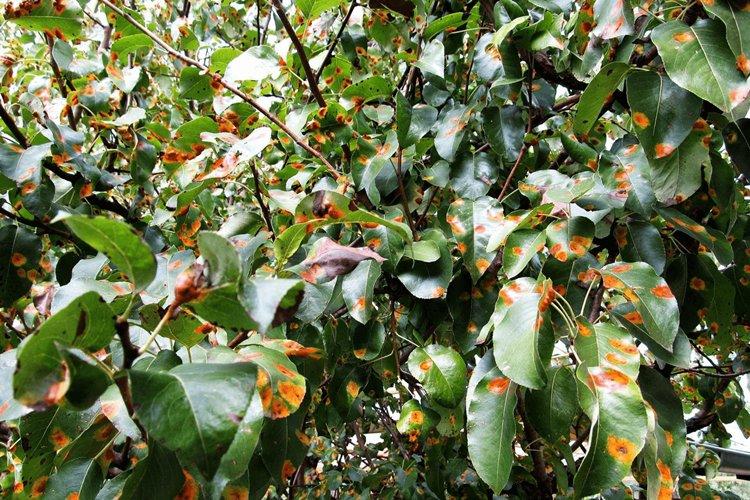
The leaves of the apple tree turn black
Blackness is a classic sign of tissue necrosis, which means that things have already taken a serious turn. It's time to take emergency measures to at least save the rest of the trees.
- Blackening and dying off causes a burn of the root system. Young seedlings most often suffer from it after too early or too abundant fertilization with organic matter;
- In a young apple tree, the leaves can also turn black due to improper watering, because young trees are sensitive to literally everything;
- If the black spots are more like a sooty coating, it may be a sooty fungus. Most often it appears after an aphid invasion;
- Small dots that grow rapidly are black cancer. First, the leaves of the apple tree become covered with red spots, and only then black foci form on them. The same disease affects wood, when the bark becomes covered with ulcers and cracks to cambium;
- Leaves completely blacken due to fire blight, which spreads to inflorescences and shoots. Bacteria are carried by insects, and it is very difficult to restore the apple tree completely afterwards.
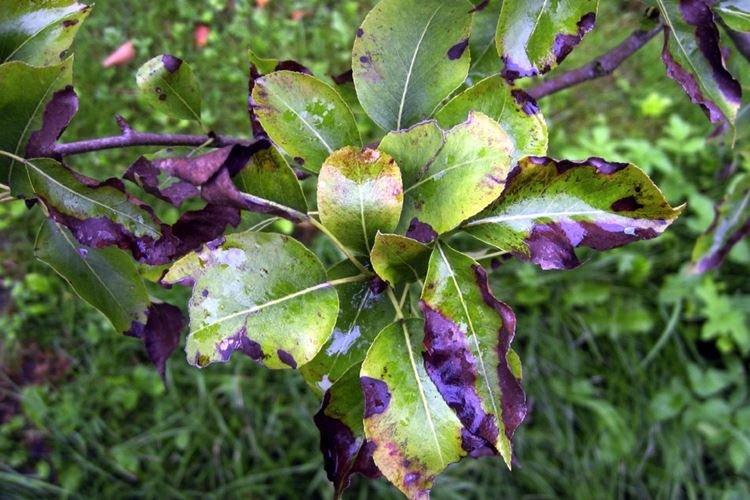
White bloom on apple leaves
White bloom of any shade or consistency is a sure sign of a fungus. After all, this is how myceliums spread and multiply, slowly capturing more and more territory.
- The most common cause of white coating on leaves is powdery mildew. Later, the affected areas dry out and die off;
- The white spider web that braids the leaves and branches is the result of the spider mite's vital activity;
- Another insect that leaves behind a white cobweb coating is the apple moth. Because of her, the leaves of the apple tree become as if transparent, because it does not touch the shell, but eats up the pulp;
- The lamina appears dull and silvery due to a milky sheen disease.
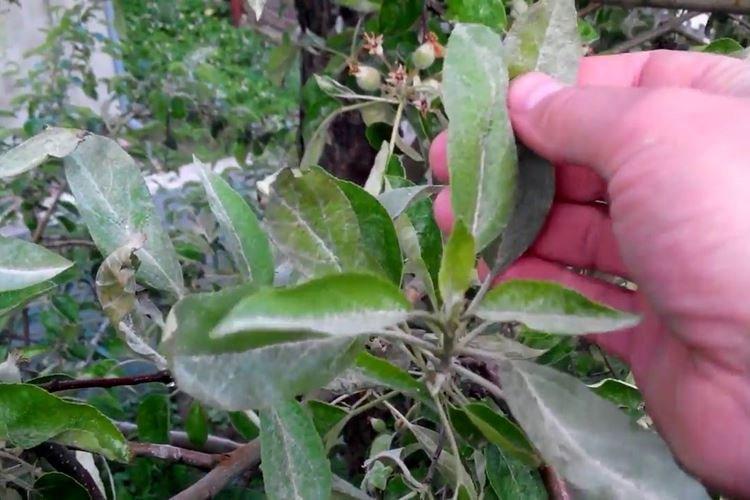
Pale and light leaves
From time to time, the leaves of the apple tree do not turn yellow, but simply lose their color. They become pale green or generally whitish, and the problem affects leaves of any age.
- Leaves grow weak, lethargic and faded due to the lack of nitrogen, which is vital during the growing season;
- A general deficiency or imbalance of trace elements causes the same consequences, therefore it is recommended to use complex fertilizers.
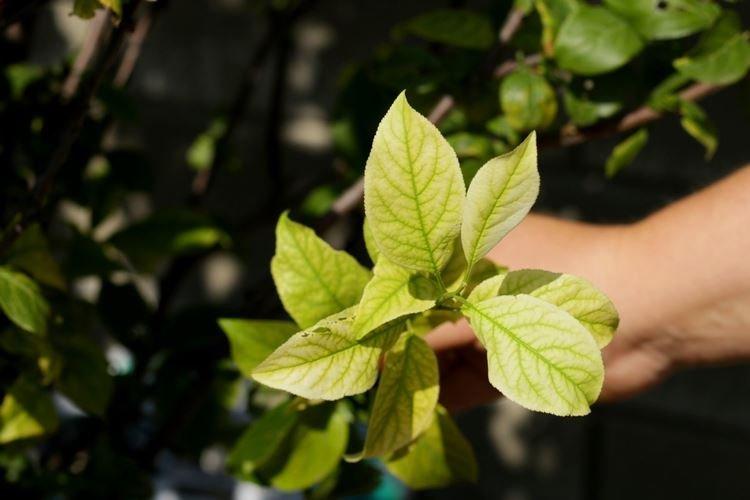
The leaves of the apple tree curl
Leaf deformation is always an alarming symptom, no matter what it looks like. At best, these are pests, from which banal spraying will help. At worst, a severe stage of one of the viral diseases that can destroy the entire garden.
- The leaves of the apple tree curl into tubes due to the fact that they are eaten by leaf rollers. They pupate there, and then leave behind only streaks and move on to the harvest;
- If the leaves seem to be glued together and upon closer inspection you can see brown sticky droplets - this is the work of the coppers. In early spring, they can glue the buds and buds together;
- Leaves are stained, swollen and deformed due to curl;
- And because of the small leaves, they become narrow, deformed and collected in nondescript rosettes.
